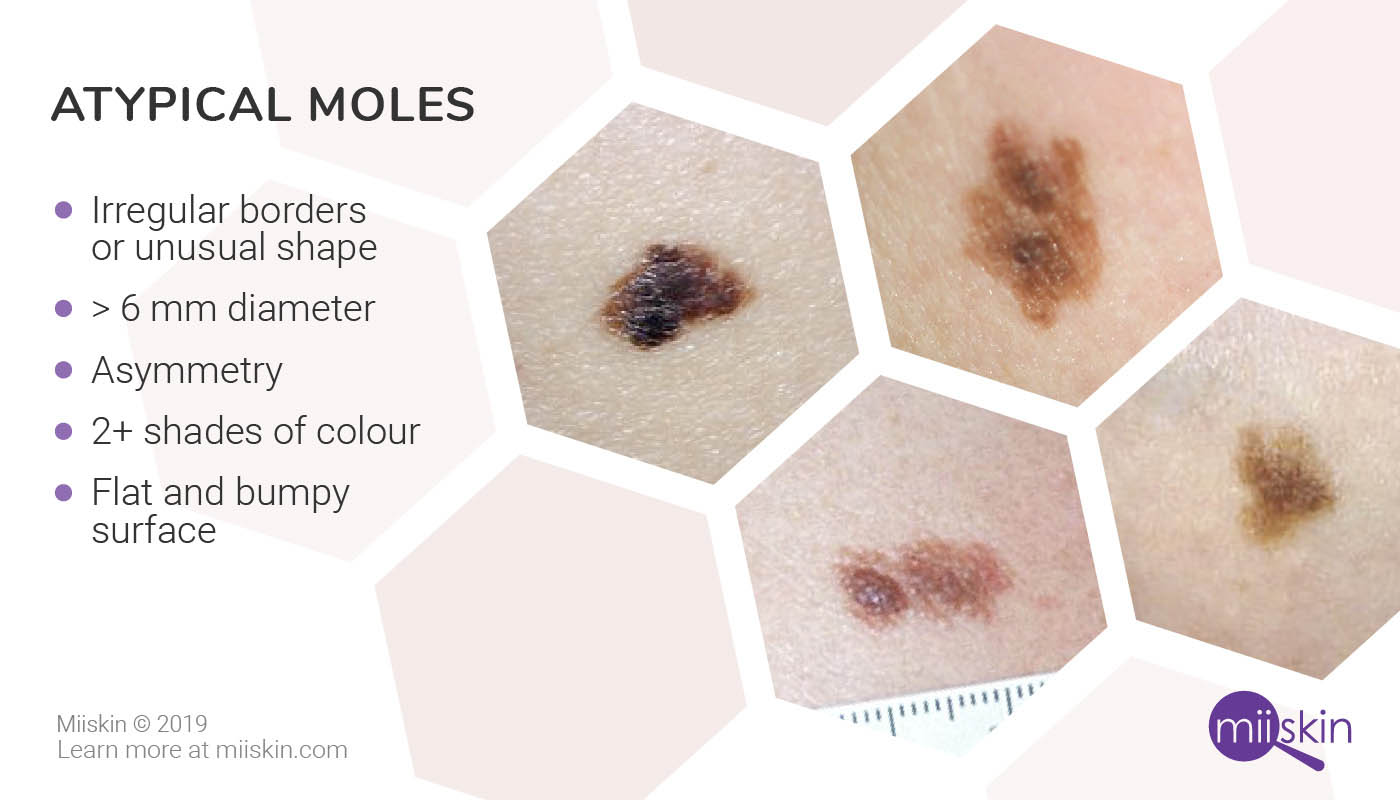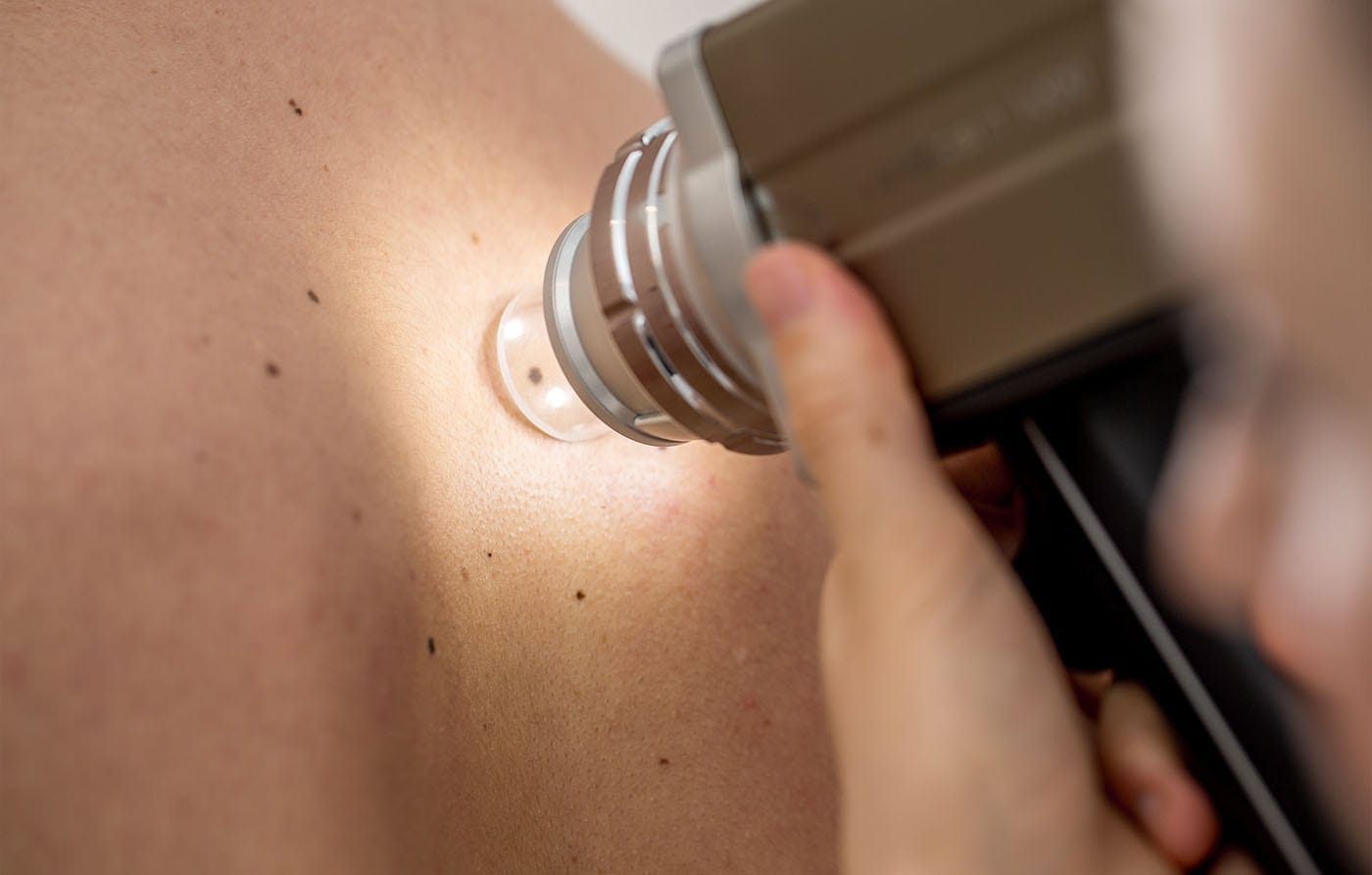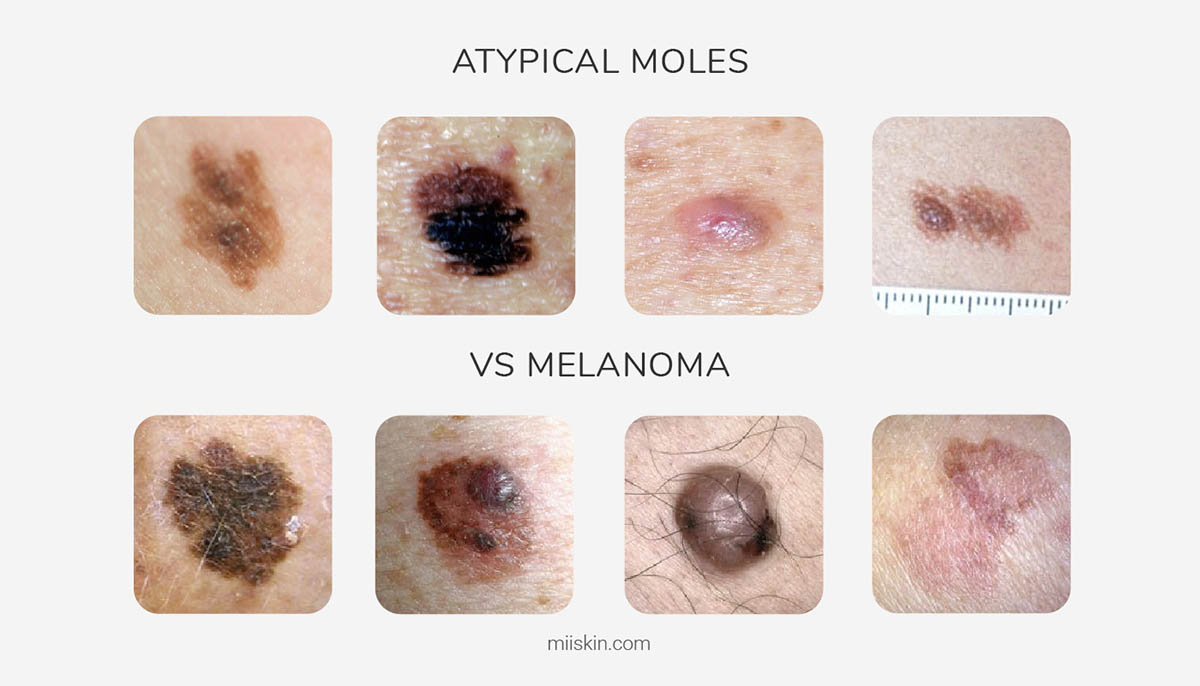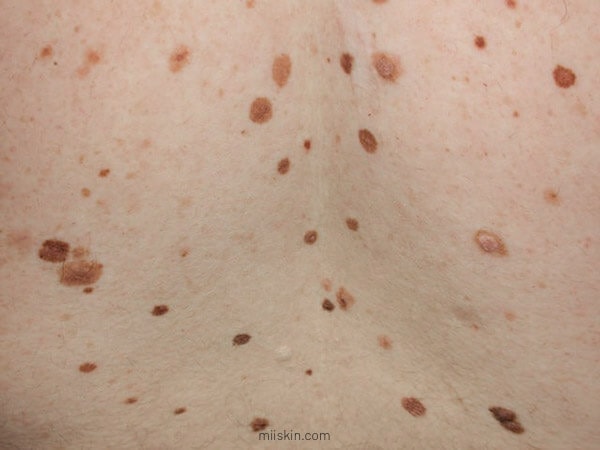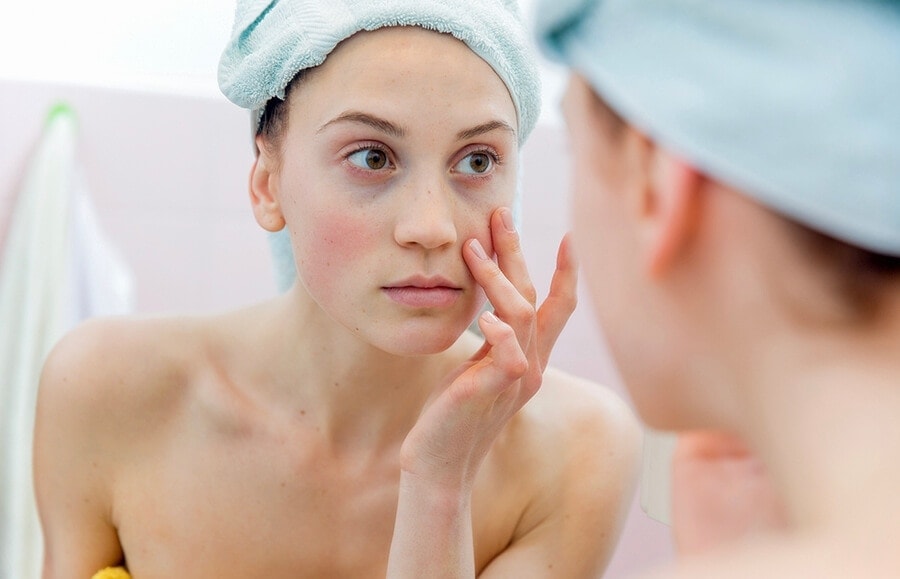Guide: Atypical Moles (Dysplastic Nevi)
Atypical moles are harmless moles that are irregular or abnormal in appearance. Consider getting any atypical, irregular or asymmetrical moles checked by a doctor.
Medically reviewed by Dr Amanda Oakley, Founder of DermNet NZ
Doctors call atypical moles “atypical melanocytic naevi” but they are sometimes referred to as dysplastic nevi (singular: dysplastic nevus / naevus in British English). In fact, whether or not a mole is actually a dysplastic nevus can only be revealed when the mole has been removed and examined under a microscope and not all pathologists use this terminology 1.
Although moles in themselves are not bad or dangerous, or a sign of disease, atypical moles can display some of the signs of melanoma and it can be difficult to know when to worry about a funny-looking mole on your skin.
Irregular, Atypical Moles and Risk of Melanoma
Normal and atypical moles very rarely turn into melanoma. In fact, seven out of ten melanomas are not associated with existing moles and appear as new marks on the skin 2. The problem with an atypical mole is that it may look just like a melanoma even though it’s harmless.
People with 5 or more atypical moles are at greater risk than average at developing a melanoma in normal skin or within a normal-looking or atypical-looking mole.
If you do have any atypical moles, you might consider getting them checked out by your doctor who will help you understand if a mole is suspicious. The doctor may use a dermatoscope to get a closer look at the structure of the mole.
You should see your doctor or dermatologist, particularly if you have many irregular moles on your skin and especially if you have ever had a melanoma or a close family member has had a melanoma. If this is the case, you might have “atypical mole syndrome” (“dysplastic nevus syndrome”) — this is actually quite rare — and your doctor may recommend that you have routine skin checks by a skin cancer professional.
Whether you have one or many atypical moles, or need to undergo routine skin checks or not, your doctor may recommend that you regularly take photographs of these moles or have someone else take them for you so you and your doctor can compare your photos over time to see if the moles change or not.
Any changing mole should be looked at by your doctor as this can be an early sign of melanoma (but may also be harmless).
Your doctor might also recommend you to use a mole checking app to help you photograph your skin and moles in a more structured manner.
MIISKIN PROMO
Tracking your moles for changes?
Miiskin helps you routinely take full-body photos and close-ups of moles to look for new or changing moles and marks.

Atypical Mole Pictures: What Does an Atypical Mole Look Like?
As a dysplastic nevus is not something that can be medically diagnosed by just looking at it, any mole that does not look like a normal mole may be said to be atypical in appearance, particularly if it appears different from the person’s other moles.
Moles that present with irregular borders, have multiple colours or show signs of asymmetry can be considered as atypical moles. These abnormal moles features are the same as the ABCD signs of melanoma, which explains why it’s important to get them checked out.
Atypical Mole Features 3
- > 6 mm diameter
- Flat and bumpy surface
- Irregular borders or unusual shape
- 2+ shades of colour
- Asymmetry of shape, colour, or structure
Most atypical moles develop before the age of 40. They grow to a certain size and then generally stop growing. Melanomas can develop in adults of any age but are more common over the age of 40. They start as tiny spots in normal-appearing skin or within a mole, and gradually enlarge and become steadily more unusual-looking.
Photographs can help track the changes; however, if it looks odd, don’t wait to see what will happen over time; have it checked out by your doctor now. Your doctor may find it useful to know if a mole has changed or if it has recently appeared on adult skin. This “history” helps them assess the mole.
Below you will find atypical mole pictures and the most common features. These images were of lesions suspicious of melanoma that were cut out so we know they were harmless atypical or dysplastic nevi.
Flat and bumpy surface
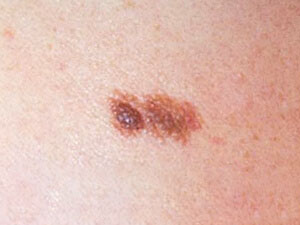
Irregular borders or unusual shape

2+ shades of colour
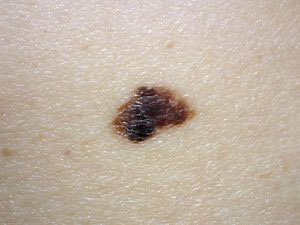
Asymmetry of shape
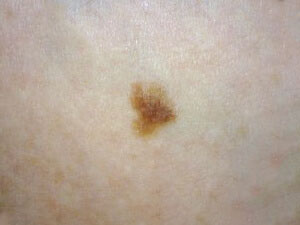
The moles pictures in this article were licensed from DermNet NZ
The pathology report of an atypical mole may report a normal mole or a mildly, moderately or severely dysplastic nevus. The pathologist may find it difficult to be completely certain that a moderately or severely dysplastic naevus is not actually a low-grade melanoma; the surgeon will make sure that the whole lesion has been surgically removed as a precaution.
Visual Difference Between Atypical Moles and Melanoma
It can be difficult to tell if a mole or mark is an atypical mole or whether it could be a melanoma. We have created the atypical moles vs melanoma illustration below to indicate the difference between atypical moles and melanoma. However, it’s important to understand that melanoma may not appear like any of these pictures — each one is unique in appearance — and a medical assessment is needed to determine if a mole is potentially dangerous.
It’s best to get to know the appearance of your moles so that you know what’s normal for you and if anything changes. If you are in doubt, please see your doctor.
Atypical Mole Syndrome (Dysplastic Nevus Syndrome)
Dysplastic nevus (naevus) syndrome is also called familial atypical mole and melanoma syndrome (FAMM)4.
The FAMM term highlights the fact that having many atypical moles is typically something that runs in the family and members of these families may be at a much higher risk of melanoma than the general population.
The increased risk of melanoma makes it important for people with many atypical moles, or even many normal moles (> 50), who has a parent, child or sibling diagnosed with melanoma at a young age (under 40 years) to consider undergoing regular skin checks by a qualified medical professional like a dermatologist.
Total body photography and digital dermoscopic surveillance may also be recommended for people with FAMM.
Skin monitoring and photo comparison apps can help people take photographs of their skin to become more aware of changes in those areas.
Below is an image of the back of a person with atypical mole (and melanoma) syndrome.
Atypical Moles, Removal and Prevention
An atypical mole does not automatically need surgical removal if it doesn’t show any signs of change and a doctor has assessed it5. Each case is different, so ask your doctor for the best course of action for your moles, especially if you have an atypical mole that has shown signs of change or is different from your other moles — a so-called ‘ugly duckling’.
When seeing your doctor, use the opportunity to ask if you should do regular skin self-examinations and if using a skin monitoring app is recommended for you.
Consult a Board-Certified Dermatologist Now!

Download the Miiskin app to connect with independent, board-certified dermatologists who are licensed in your state. Answer a few questions, upload some photos and get a treatment plan in 1-2 days. Consultation price is $59 and medication renewals are only $39.
Online dermatology care is ideal for chronic dermatology conditions.
Make a difference. Share this article.

